Megalodon: The Monster Shark Lives
Discovery brings SHARK WEEK viewers on a search for a massive killer Great White shark responsible for a rash of fatalities off the coast of South Africa. One controversial scientist believes that the shark responsible could be Megalodon, a 60-foot relative of the Great White that is one of the largest and most powerful predators in history. Our oceans remain 95% unexplored, and this massive prehistoric predator has always been shrouded in secrecy, but after a rash of newly discovered evidence, authorities are forced to investigate and hunt for the predator long thought to be extinct. A crew of scientists and shark experts examine evidence and fearlessly seek answers to the many questions surrounding one of the last great mysteries of the deep ocean while creating the largest chum slick in history. (http://bit.ly/SharkWeek2013-programming)
That’s the way Shark Week feels to me these days, like a big, multi-platform chum slick…a greasy, fetid soup of fear and fascination that titillates more that it educates. Is that over the top? Yeah, probably, but then it will fit right into a line-up that includes titles like: I Escaped Jaws, Great White Serial Killer, and Sharkpocalypse. In all honesty, most of these shows will not be nearly as bad as their titles suggest. My primary beef is (and continues to be) the lack of shark diversity during Shark Week.
But hark, what’s that? A bioluminescent beacon of light from the deep? On Thursday, August 8, Discovery’s feature program is Alien Sharks of the Deep. Reading that title out loud makes it sound worse than the rest…like an early draft of the robo-monster blockbuster Pacific Rim. But no, this program appears to explore the weird, wonderful, and diverse sharks of the oceanic abyss. Could this restore my faith in the potential that is Shark Week? Think of some of the possibilities:
Goblin sharks: Goblins have been known as tenguzame, after tengu, a fantastical creature of Japanese mythology often depicted with an elongated nose or beak. Goblins are fantastical in their own right, with long, blade-like rostrums and slingshot protrusible jaws that have to be seen to be believed.
Taillight and lantern sharks: Many deepsea sharks are bioluminescent, creating light with specialized organs called photophores. Many of these sharks use their photophores to hide in the downwelling light by erasing their shadows through counterillumination. Tailight sharks also secrete a blue luminescent fluid from their, um, ‘tail end.’ Since the species is known from only two specimens and has never been seen alive, no one knows exactly what this fluid is for.
Megamouth: Not to be confused with Megalodon. In fact, the two couldn’t be less alike. Large Megalodon teeth may be 5-7 inches long (about the size of your hand), megamouth teeth 5-7 millimeters (half the size of your pinkie fingernail). Whereas Megalodon likely fed on whales and other large marine mammals and turtles, megamouth is a plankton specialist. There have been only 55 confirmed sightings of megamouth sharks since 1976, and only a handful of these have been examined by scientists.
Frilled sharks: Frilled sharks are a freak show. They hardly look like sharks at all. Well, they do, just more like sharks from hundreds of millions of years ago. The long, eel-like body, terminal mouth, unusual teeth, fins, and other anatomical features are all distinctly ancient.
Rough sharks: Rough sharks are another group that breaks the stereotypical shark mold—small and hunchbacked, with large spiny dorsal fins. They may be fairly common in the deep waters where they’re found, but still, we know very little.
Six- and sevengills: Cow sharks are another group with distinctly ancient features. Many have seen sevengills in public aquariums, but the larger sixgill sharks don’t do as well on display. Sixgills are broad, ponderous creatures, with large specimens more than 16 feet long and as big around as a Volkswagen (as one diver describes them). These normally deepwater denizens have been occasionally spotted right under pier at the Seattle Aquarium. Puget Sound’s deep, glacier-etched profile provides a unique opportunity to observe and study these sharks without the need for research vessels or submersibles.
Cookiecutters: Interested in learning about a glowing foot-long shark that feeds on whales, tunas, swordfish, and squid? So are scientists, as they don’t seem to agree on how this small, slow-swimming shark seems to manage it. While they might not have the physique for the feat, they have the oral equipment. Fleshy lips and a strong tongue create a suction grip that buys time for the cookiecutter’s large, triangular lower teeth to cut a plug from its unsuspecting victim.
Cats and dogs: The deepsea is really the realm of dogfish and catsharks…dozens of species, some with names alone that inspire curiosity. Don’t you want to know more about lollipop catsharks, mosaic gulper sharks, birdbeak dogfish, spatulasnout catsharks, velvet bellies, demon catsharks, frog sharks, pajama sharks, pocket sharks, and pygmy ribbontail catsharks? Me too.
I’m excited for Alien Sharks in a way I haven’t been for Shark Week programming in a very long time. Wednesday night I’ll have trouble sleeping with visions of lanternsharks dancing in my head. There is soooo much more to sharks than white sharks and tigers and bulls (oh my). How can we encourage more programming that highlights this fascinating diversity? We can watch.
That’s my call to action. Watch Alien Sharks of the Deep on August 8, 10:00/9:00 central. Ask your friends to watch. Throw an Alien Sharks party. Dress up like an Alien Shark for work. Live tweet #AlienSharks like the second coming of Sharknado (you can follow and tweet at me @jimwharton). Show Discovery your love for Alien Sharks and beg them for more. Be as pathetic as you like. Let’s send a message that it’s a big wide world of sharks out there and we want to see more of it…and we’ll be happy to swim through an ocean of chum to get there.

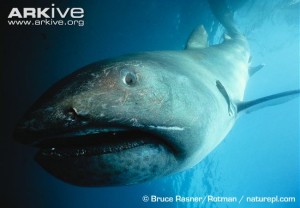
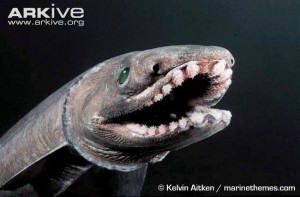
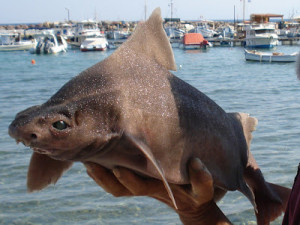
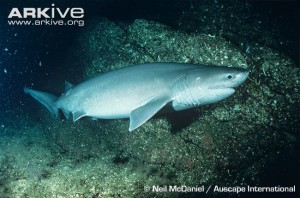
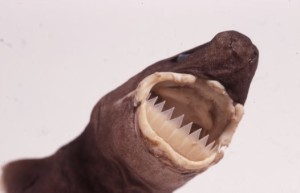







Speak Your Mind